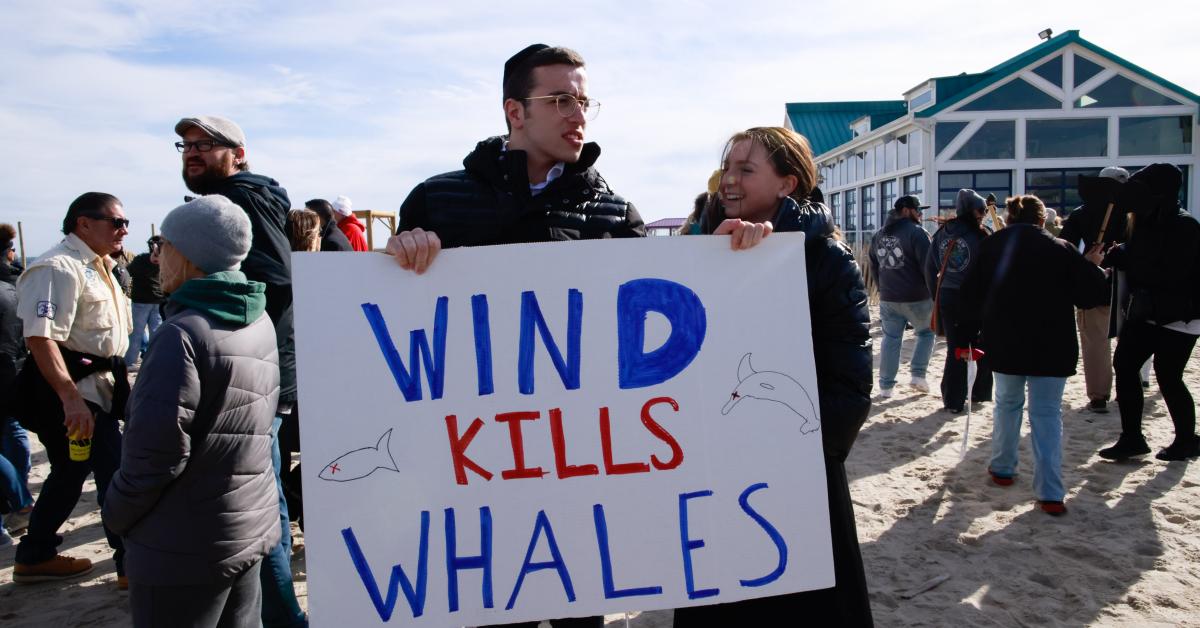We support our Publishers and Content Creators. You can view this story on their website by CLICKING HERE.

While it’s been difficult for voters to determine exactly where Democratic presidential candidate Kamala Harris truly stands on energy, former President Donald Trump and his running mate, Sen. JD Vance, R-Ohio, each discussed their views at length on “The Joe Rogan Experience” podcast. Vance, who appeared on the podcast Thursday, spent several minutes discussing energy with host Joe Rogan.
Vance said he and his wife took a road trip through Iowa, Nebraska and Kansas and for miles all they could see were wind farms.
“This is beautiful American countryside that used to be green rolling hills, and now you have these disgusting, dystopian wind turbines. I’m sorry. They are ugly. I will die on this hill. They’re ugly. I don’t want them in American society,” Vance said.
Crazy things
The wind energy industry is running up against more and more opposition. Much of it comes from grassroots efforts at the local level. Energy watchdog Robert Bryce maintains a database of renewable energy projects that have been scrapped, most often because of community opposition. In 2014, one wind project was canceled. Since then, the total number has grown to 464 wind projects shot down, as well as 281 solar projects.
The wind industry doesn’t appear to believe these community concerns are valid. The Associated Press reported on comments wind energy lobbyists made at a conference in Atlantic City, New Jersey Tuesday, claiming that concerns about wind projects are driven by “misinformation.” The industry is vowing to fight against it. Paulina O’Connor, executive director of the New Jersey Offshore Wind Alliance, told the Associated Press that she has trouble predicting “what crazy thing they’re [wind energy opponents] going to come next.”
Bryce told Just the News that, while lobbyists the Associated Press quoted are dismissive of communities’ concerns, developers are going to find it harder and harder to get a welcoming response.
“The public acceptance of wind energy is exhausted. People don’t want to live near these massive turbines, and they are expressing that in many across the country, from Maine to Hawaii,” Bryce said.
Whale psychiatrists
Among the concerns that wind lobbyists described as “misinformation” was the claims that offshore wind is killing whales. During his appearance on the Rogan podcast, Trump commented on these concerns. “I wanna be a whale psychiatrist. It drives the whales fricking crazy. And something happens with them, but for whatever reason, they’re getting washed up onshore and you know, they’re ignored by these environmentalists. But they don’t talk about it.” Trump said.
The Associated Press, which has received millions of dollars from political advocacy groups that promote the wind and solar industry, reported that these claims are “unsubstantiated” based on the fact that federal agencies tasked with carrying out the Biden-Harris goal of building 30 gigawatts of offshore wind have denied any connections between offshore wind and whale deaths.
While it’s true that wind turbines aren’t directly killing whales, whale advocates argue that the noise of the construction causes harm that results in the animals swimming into vessel traffic. Robert Rand, founder of the acoustics consultancy company Rand Acoustics, has surveyed noise levels from pile driving and sonar survey vessels.
Both studies found that the incidental harassment authorizations — permits that offshore wind developers are required to obtain to conduct activities that may adversely affect marine animals — don’t impose sufficient mitigation requirements to protect marine animals. Rutgers professor Apostolos Gerasoulis performed a statistical analysis and found a strong correlation between where whales are dying and offshore wind development.
Financial winds
Besides growing opposition to offshore wind, especially after a blade broke off a wind turbine near Nantucket and scattered debris across multiple beaches, the offshore wind industry is struggling financially. An offshore lease sale in the Gulf of Maine netted only 4 bidders on 439,096 acres that were offered, and the bids came in at $50 per acre. A 2022 auction for a lease area off the coast of New York and New Jersey sold 6 leases on 488,000 acres for $8,955 per acre.
The sale may be the last for at least a year, as a provision in the Inflation Reduction Act prohibits offshore wind lease sales without offering up oil and gas lease sales. The Department of Interior’s five-year offshore oil and gas lease shale program offers the fewest leases in the program’s history.
Against this backdrop of disappointing financial outcomes, the wind industry is also concerned with what happens if Trump and Vance win next week’s election. At the Atlantic City conference, Reuters reported that participants fear a “long, slow spiral for the industry” if Trump wins and halts federal permitting for wind projects.
Energy expert David Blackmon, who publishes his work on his “Energy Absurdities” blog, argues that regardless of what happens in the election, public opposition is going to be there.
“There’s a lot of momentum outside the presidential campaign against further development of wind energy. Hundreds of communities are restricting development,” Blackmon told Just the News.
Local control
One way the renewable industry is fighting communities who oppose their projects is by depriving local governments of authority in permitting decisions. The Virginia Mercury reported this week that a coalition of solar developers is pushing the Virginia legislature to block counties from passing ordinances that restrict renewable energy projects.
Over the past 18 months, according to the Mid-Atlantic Renewable Energy Coalition, 33 large utility-scale solar projects were rejected across the state.
Last year, the Michigan legislature passed laws granting authority in permitting renewable energy projects to the Michigan Public Service Commission. Kevon Martis, a Michigan resident, helped organize a ballot initiative to overturn the laws, but the effort didn’t collect enough signatures. He told Just the News there was plenty of support for overturning the laws, but they couldn’t raise enough funds to hire the collectors.
“Nobody wanted the state to touch local control of wind and solar and battery zoning. Nobody. That was never the problem,” he said.
The Energy and Policy Institute, which receives funding from political advocacy groups that promote the wind and solar industry, initiated a campaign claiming the ballot initiative effort was a front for oil and gas interests. The basis for this claim was that the organization spearheading the effort had consulted Marketing Resource Group, which had also represented a pipeline company. However, as Barn Raising Media reported, campaign finance disclosures revealed no substantial funding from fossil fuel companies, other than one $10,000 donation from a retired executive of a company that makes natural gas compressors. Martis said that he was never approached by any oil companies offering to fund the effort.
“They never do. They’re too busy building wind and solar,” Martis said, referring to the massive investments some oil companies make into wind and solar development. Despite that fact, renewable energy advocates regularly promote the idea that community opposition is funded by oil companies.
Despite not gathering enough signatures, Martis said the effort raised awareness of the issues, and they will likely try again in 2026. “We don’t feel that we failed in many regards, because we created a substantial coalition. And we’ve kept the issue alive,” Martis said.
The outcome of the election is yet to be determined, but whether Trump and Vance secure the White House after Tuesday’s election, opposition to renewable energy projects is sailing on its own winds.

 Conservative
Conservative  Search
Search Trending
Trending Current News
Current News 





